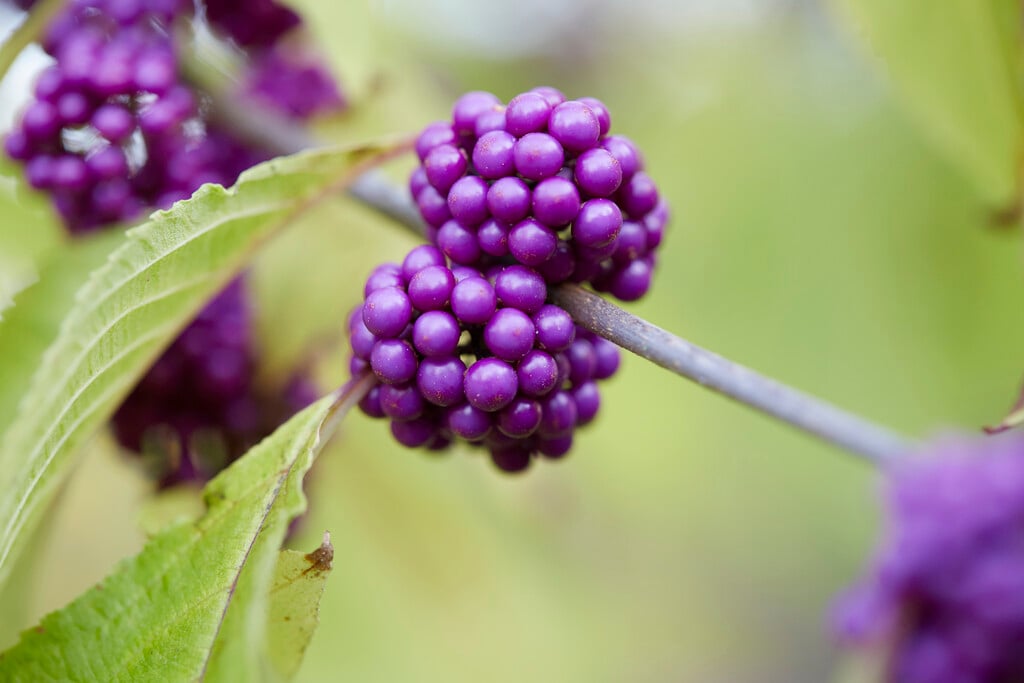Callicarpa bodinieri
Bodinier beautyberry
A deciduous shrub to 2.5m high, with narrowly ovate, toothed dark green leaves that tint pink and purple in autumn. In mid-summer, produces small lilac coloured flowers in clusters along the stems, these are followed in autumn by glossy, round, pale lilac berries
Size
Ultimate height
1.5–2.5 metresTime to ultimate height
5–10 yearsUltimate spread
1.5–2.5 metresGrowing conditions
Moisture
Well–drainedpH
Acid, Alkaline, NeutralColour & scent
| Stem | Flower | Foliage | Fruit | |
| Spring | Green | |||
|---|---|---|---|---|
| Summer | Pink Purple | Green | ||
| Autumn | Green Pink Purple | Pink Purple | ||
| Winter |
Position
- Full sun
- Partial shade
Aspect
East–facing or South–facing or West–facing
Exposure
Sheltered Hardiness
H6Botanical details
- Family
- Lamiaceae
- Native to GB / Ireland
- No
- Foliage
- Deciduous
- Habit
- Bushy, Columnar upright
- Potentially harmful
- Fruit are ornamental - not to be eaten. Wear gloves and other protective equipment when handling Pets: Fruit are ornamental - not to be eaten - see the HTA guide to potentially harmful plants for further information and useful contact numbers
- Genus
Callicarpa can be evergreen or deciduous shrubs, with simple, opposite leaves and tiny white pink or purple flowers in axillary clusters, followed by small, usually colourful fruits. Several shrubs grown together ensures pollination for successful fruiting
- Name status
Correct
- Plant range
- C & W China
How to grow
Cultivation
Grow in fertile, well drained soil in sun or part shade. Fruits best when grown in groups; at least two plants are needed to ensure pollination and berry production
Propagation
Propagate by seed, by softwood cuttings in spring, or by semi-ripe cuttings with bottom heat in summer
Suggested planting locations and garden types
- Cottage and informal garden
- Low Maintenance
- Cut flowers
- Flower borders and beds
Pruning
Pests
Generally pest-free
Diseases
May be susceptible to honey fungus (rarely)
Love gardening
Sign up to receive regular gardening tips, inspiration, offers and more
View our Privacy Policy
Get involved
The Royal Horticultural Society is the UK’s leading gardening charity. We aim to enrich everyone’s life through plants, and make the UK a greener and more beautiful place.

